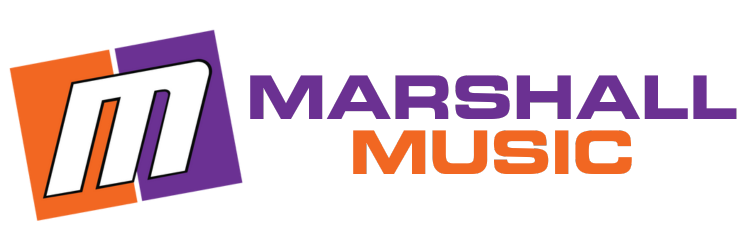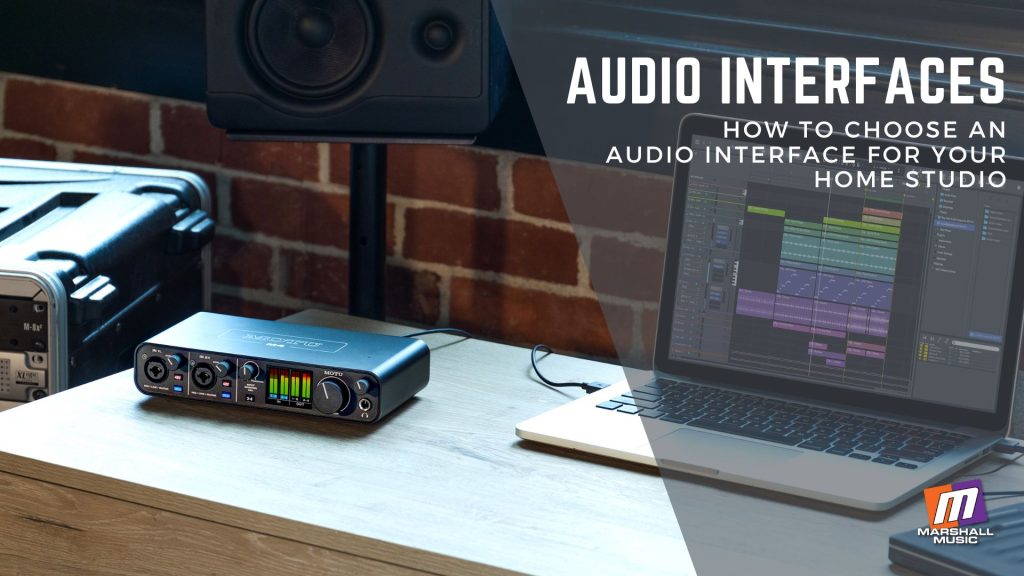A Deep Dive into MOTU M4, Lewitt Connect 6, and Arturia MiniFuse 4
Setting up a home studio is an exciting journey, but choosing the right audio interface can be a daunting task. The audio interface is the heart of your studio, acting as the bridge between your microphones, instruments, and your computer. It’s responsible for converting analog signals into digital data and vice versa, ensuring high-quality audio recording and playback.
In this blog post, we’ll explore the key factors to consider when choosing an audio interface and compare three popular models: the MOTU M4, the Lewitt Connect 6, and the Arturia MiniFuse 4. Each of these interfaces offers unique features, and understanding their strengths and weaknesses will help you make an informed decision.
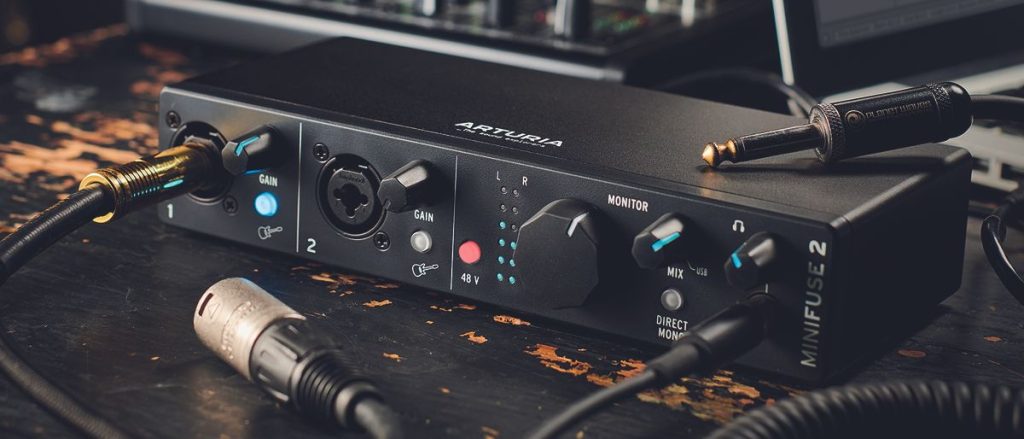
Key Factors to Consider When Choosing an Audio Interface
Before diving into the specifics of each interface, let’s outline the key factors to consider:
- Input/Output (I/O) Count: How many microphones, instruments, or external devices do you need to connect simultaneously?
- Sound Quality: Look at the preamp quality, dynamic range, and sample rate/bit depth.
- Latency: Low latency is crucial for real-time monitoring and recording.
- Software Bundle: Many interfaces come with DAWs, plugins, or virtual instruments.
- Build Quality and Portability: Durable construction and portability are important for home studios.
- Connectivity: USB-C, Thunderbolt, or other connection types can affect compatibility and speed.
- Price: Balance your budget with the features you need.
Now, let’s compare the MOTU M4, Lewitt Connect 6, and Arturia MiniFuse 4 based on these factors.
MOTU M4: The Professional Workhorse
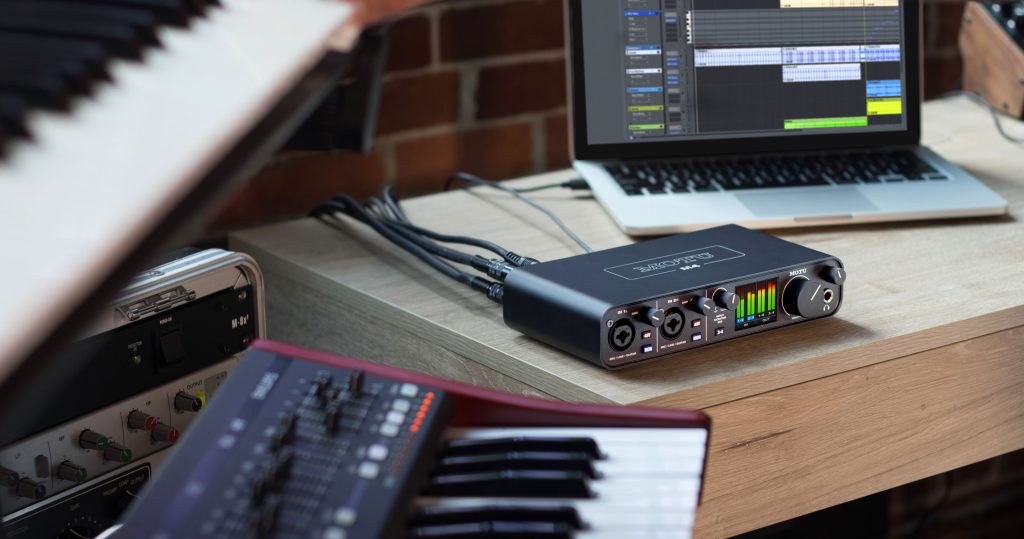
Overview
The MOTU M4 is a 4-in/4-out USB-C audio interface designed for professional-grade recording and monitoring. It’s known for its exceptional sound quality and robust build.
Key Features
- I/O Count: 4 inputs (2 XLR/TRS combo, 2 line inputs) and 4 outputs (including balanced main outs and headphone outs).
- Sound Quality: 120dB dynamic range, 192kHz sample rate, and ESS Sabre32 Ultra DAC technology for pristine audio.
- Latency: Ultra-low latency with direct hardware monitoring.
- Software Bundle: Includes Performer Lite DAW and a selection of plugins.
- Build Quality: Solid metal chassis with a sleek, professional design.
- Connectivity: USB-C with compatibility for both Mac and PC.
- Price: Mid-range, offering excellent value for its features.
Pros
- Outstanding audio quality with high-end converters.
- Flexible I/O options for small to medium-sized setups.
- Large, informative LCD screen for real-time metering.
- Excellent for both recording and mixing.
Cons
- Slightly larger and heavier than some competitors.
- No onboard DSP for effects processing.
Best For
The MOTU M4 is ideal for home studio owners who prioritize sound quality and need a reliable, professional-grade interface for recording vocals, instruments, and mixing.
Lewitt Connect 6: The Versatile Performer
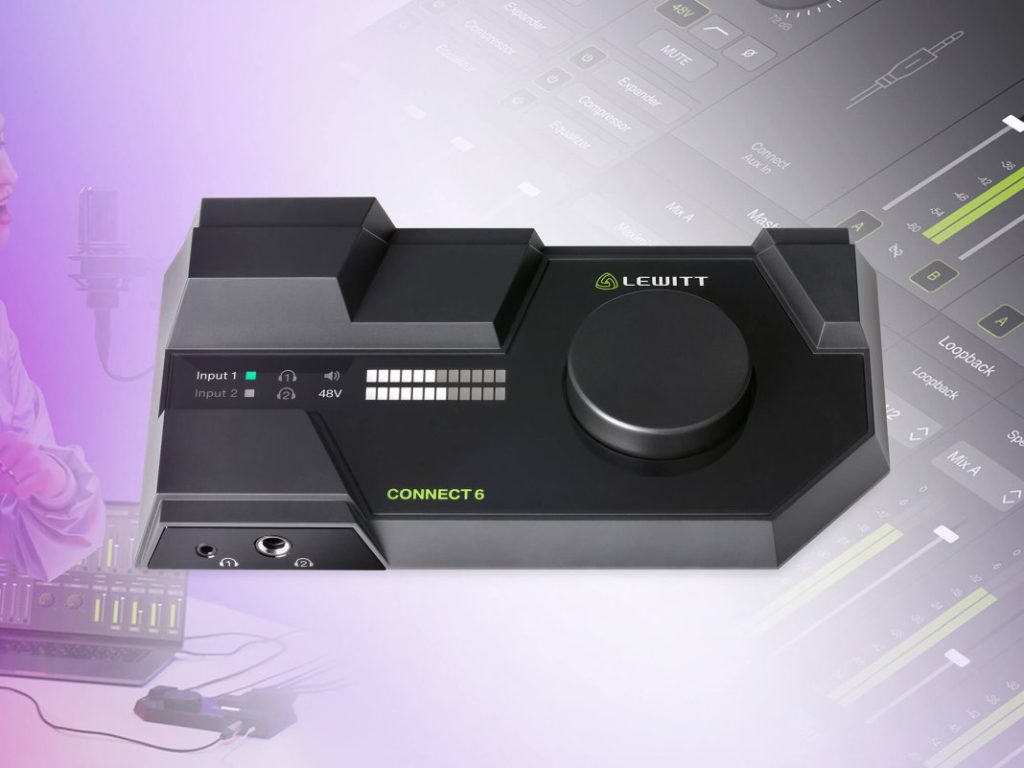
Overview
The Lewitt Connect 6 is a 6-in/4-out USB-C audio interface that combines high-quality preamps with versatile connectivity options. It’s designed for musicians and producers who need flexibility.
Key Features
- I/O Count: 6 inputs (2 XLR/TRS combo, 2 line inputs, and 2 additional line inputs via RCA) and 4 outputs.
- Sound Quality: 110dB dynamic range, 192kHz sample rate, and transparent preamps.
- Latency: Low latency with direct monitoring.
- Software Bundle: Includes Ableton Live Lite, Lewitt’s LCT 440 Pure plugin, and additional virtual instruments.
- Build Quality: Compact and lightweight with a durable design.
- Connectivity: USB-C with Mac and PC compatibility.
- Price: Mid-range, competitive with the MOTU M4.
Pros
- Versatile I/O options, including RCA inputs for connecting external gear.
- High-quality preamps with plenty of gain for dynamic microphones.
- Compact and portable design.
- Includes a useful software bundle for music production.
Cons
- Slightly lower dynamic range compared to the MOTU M4.
- RCA inputs may not be useful for all users.
Best For
The Lewitt Connect 6 is perfect for musicians and producers who need a flexible interface for recording multiple sources, including external synths or drum machines.
Arturia MiniFuse 4: The Budget-Friendly Powerhouse
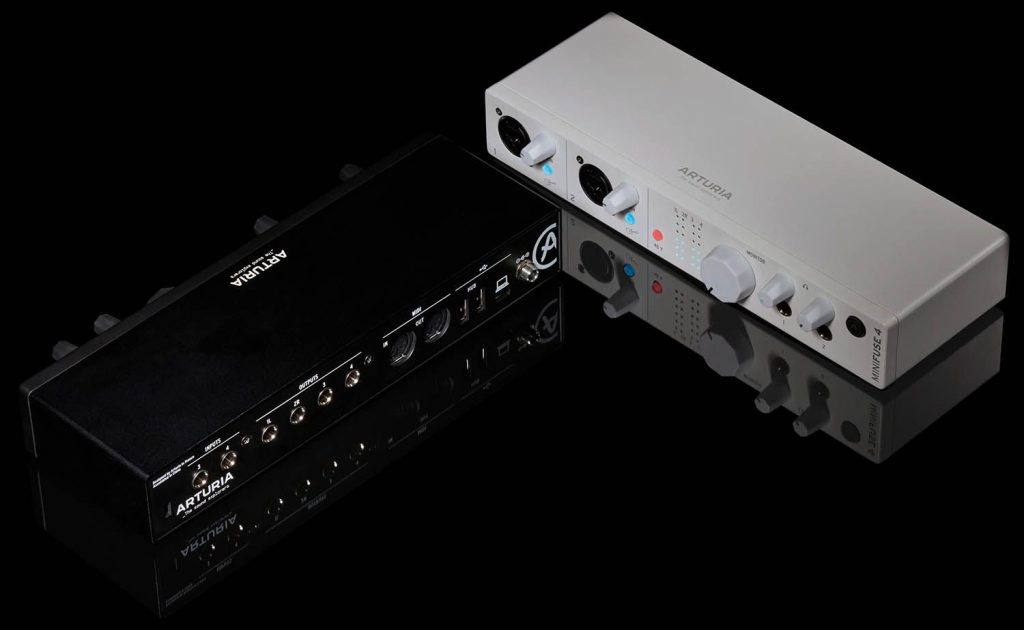
Overview
The Arturia MiniFuse 4 is a 4-in/4-out USB-C audio interface that combines affordability with solid performance. It’s designed for beginners and intermediate users who want a reliable interface without breaking the bank.
Key Features
- I/O Count: 4 inputs (2 XLR/TRS combo, 2 line inputs) and 4 outputs.
- Sound Quality: 108dB dynamic range, 192kHz sample rate, and Arturia’s signature preamps.
- Latency: Low latency with direct monitoring.
- Software Bundle: Includes Analog Lab Intro, Ableton Live Lite, and MiniFuse FX Suite.
- Build Quality: Compact and lightweight with a stylish design.
- Connectivity: USB-C with Mac and PC compatibility.
- Price: Budget-friendly, making it an excellent entry-level option.
Pros
- Affordable price with solid performance.
- Includes a generous software bundle for music production.
- Compact and portable design.
- Easy to use, making it great for beginners.
Cons
- Lower dynamic range compared to the MOTU M4 and Lewitt Connect 6.
- Fewer I/O options than the Lewitt Connect 6.
Best For
The Arturia MiniFuse 4 is ideal for beginners or those on a budget who want a reliable interface for recording vocals, guitars, and MIDI instruments.
Comparison Table
| Feature | MOTU M4 | Lewitt Connect 6 | Arturia MiniFuse 4 |
|---|---|---|---|
| I/O Count | 4-in/4-out | 6-in/4-out | 4-in/4-out |
| Sound Quality | 120dB dynamic range | 110dB dynamic range | 108dB dynamic range |
| Latency | Ultra-low | Low | Low |
| Software Bundle | Performer Lite, plugins | Ableton Live Lite, LCT 440 Pure | Analog Lab Intro, Ableton Live Lite, MiniFuse FX Suite |
| Build Quality | Solid metal chassis | Compact and durable | Compact and stylish |
| Connectivity | USB-C | USB-C | USB-C |
| Price | Mid-range | Mid-range | Budget-friendly |
Which One Should You Choose?
- Choose the MOTU M4 if you prioritize sound quality and need a professional-grade interface for recording and mixing.
- Choose the Lewitt Connect 6 if you need versatile I/O options and a compact design for recording multiple sources.
- Choose the Arturia MiniFuse 4 if you’re on a budget or just starting out and want a reliable interface with a great software bundle.
Final Thoughts
Choosing the right audio interface depends on your specific needs, budget, and the type of music production you plan to do. The MOTU M4, Lewitt Connect 6, and Arturia MiniFuse 4 are all excellent choices, but they cater to slightly different audiences. By understanding their strengths and weaknesses, you can make an informed decision that will serve your home studio well for years to come.
Happy recording!
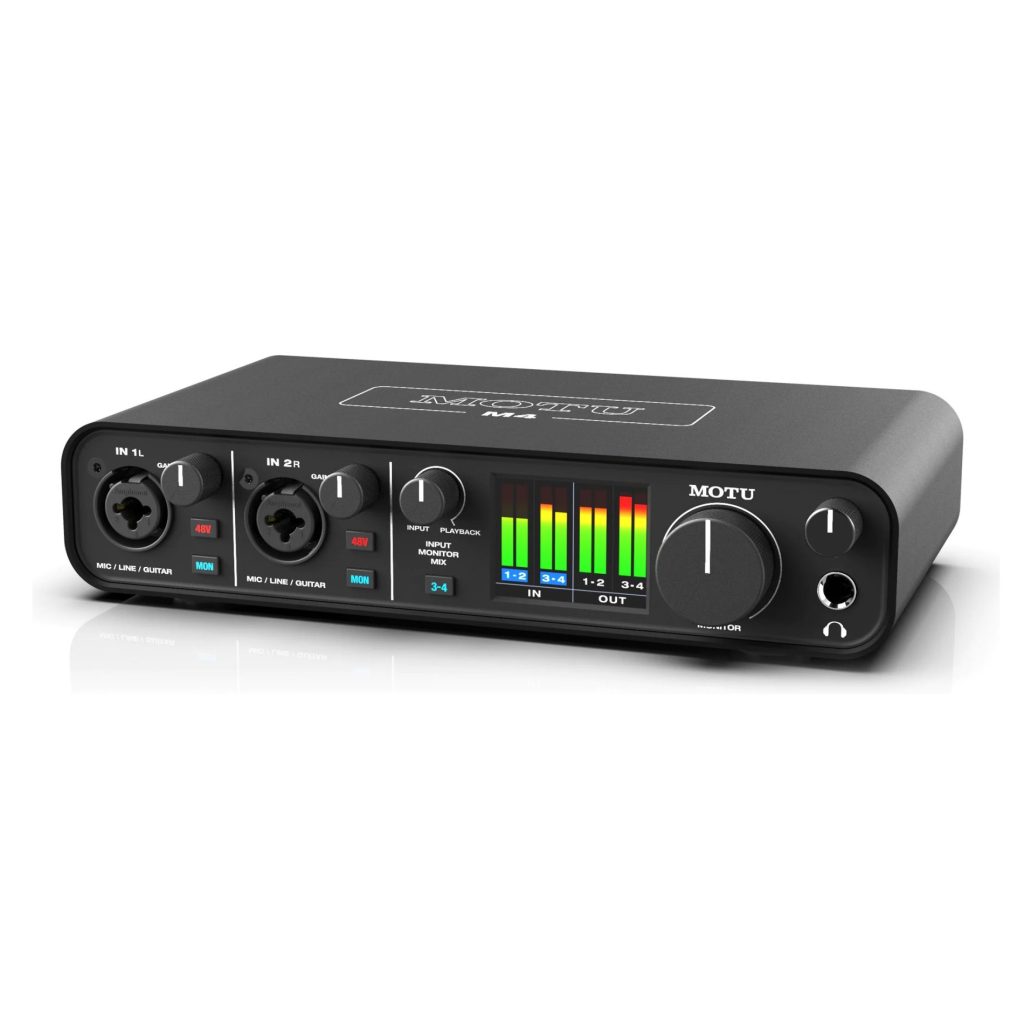
MOTU M4 4×4 USB-C Audio Interface
6 in stock
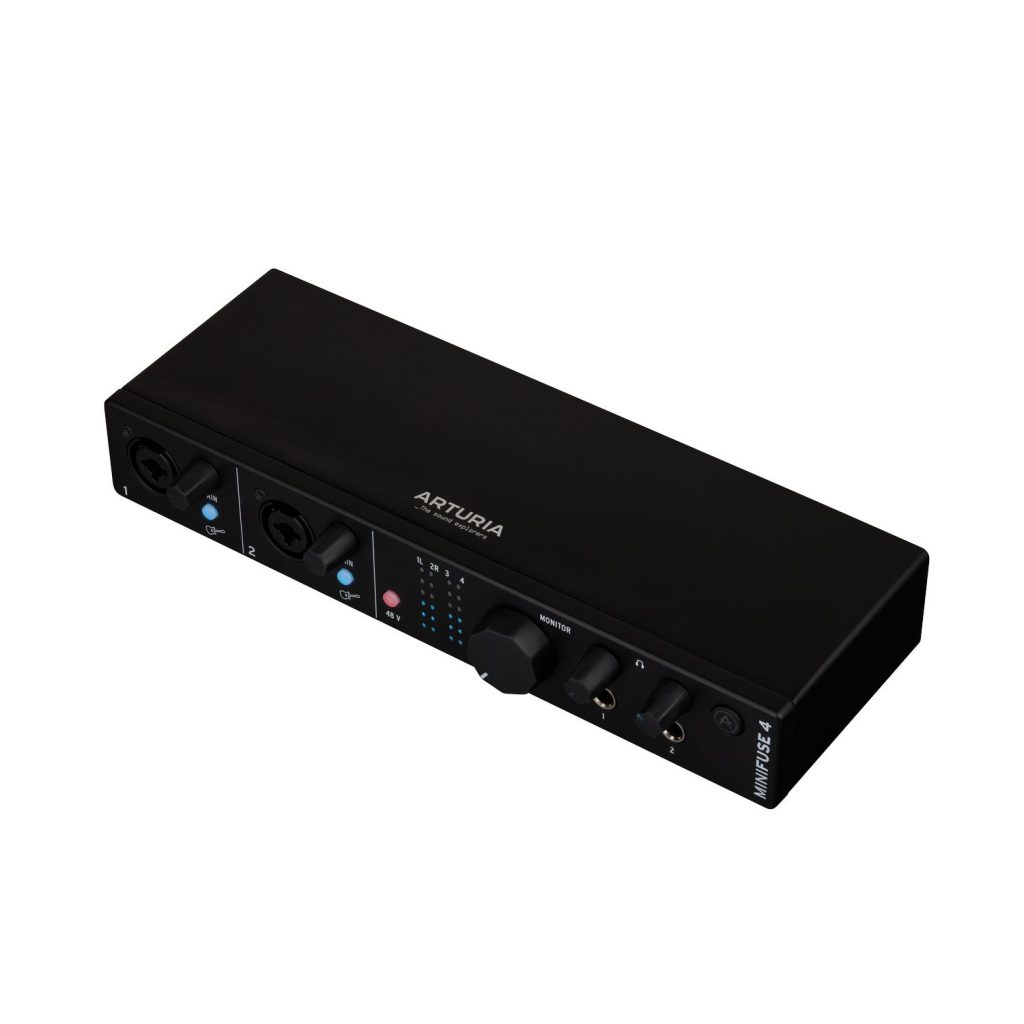
Arturia MiniFuse 4 USB-C Audio Interface (Black)
1 in stock
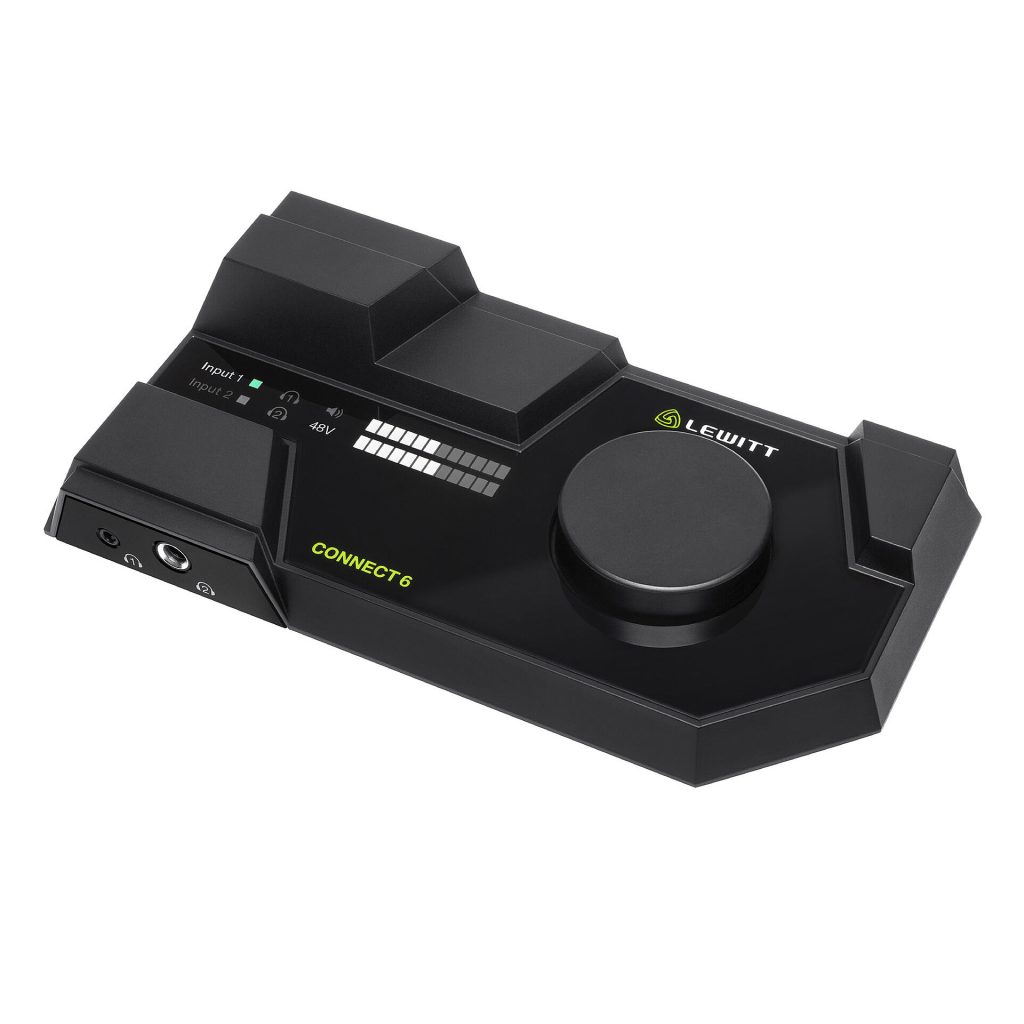
Lewitt Connect 6 USB-C Audio interface
1 in stock
